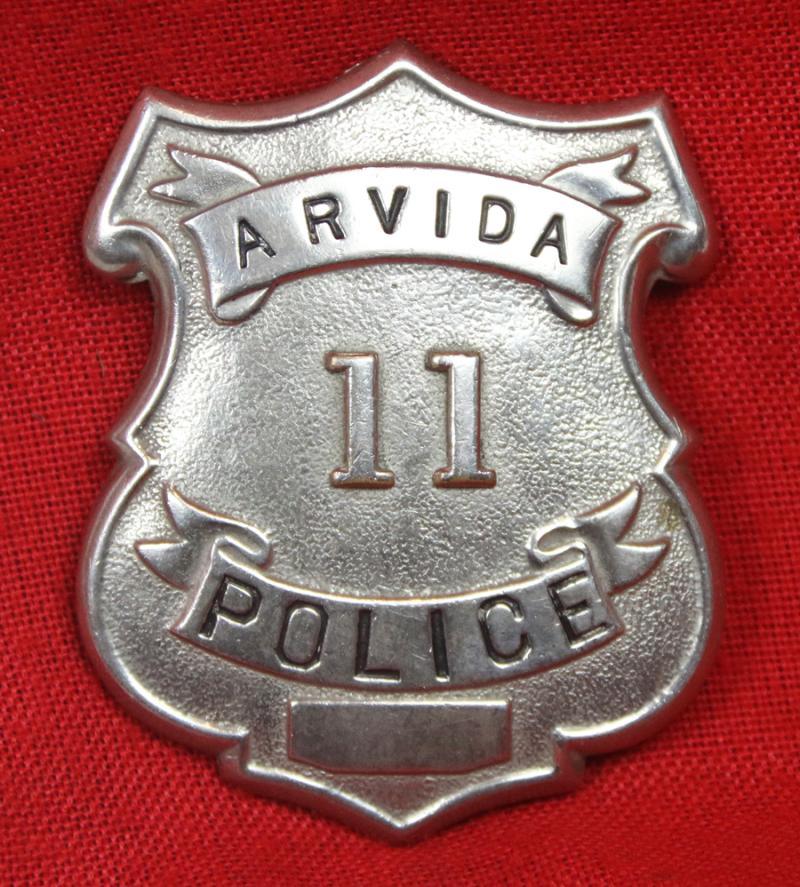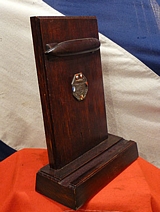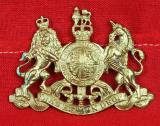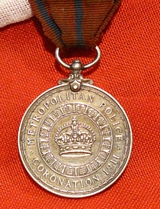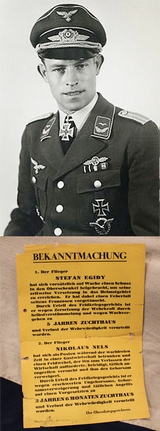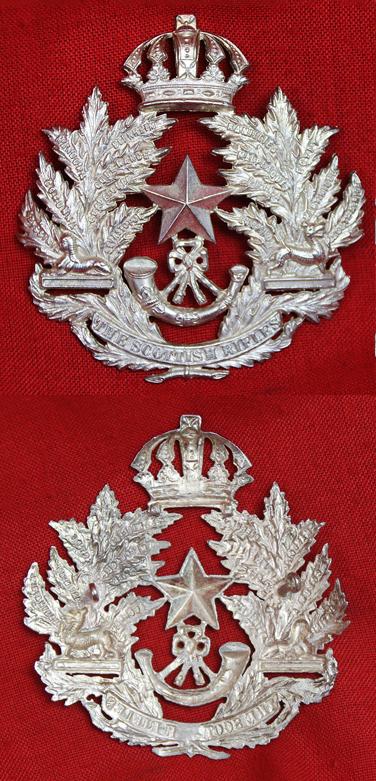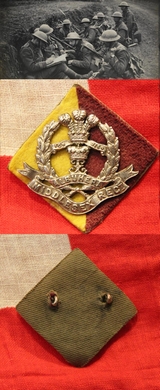WW1 / WW2 / 20th Century
A Most Interesting & Scarce Vintage Patrolman's Police Shield Arvida Police. Numbered II
A now defunct force. In very good condition overall , with a panel at the base front. Bears the central affixed number, II. With central north-south affixing pin with rotating safety fixing. read more
85.00 GBP
An Unusual Piece of Original, Airship Aeronautica, 1929 Zeppelin Display Stand, In Oak With Zeppelin Badge And Carved Airship
Ferdinand von Zeppelin served as an official observer with the Union Army during the American Civil War. During the Peninsular Campaign, he visited the balloon camp of Thaddeus S. C. Lowe. Lowe sent the curious von Zeppelin to another balloon camp where the German-born aeronaut John Steiner could be of more help to the young man. His first ascent in a balloon, made at Saint Paul, Minnesota during this visit, is said to have been the inspiration of his later interest in aeronautics.
Zeppelin's ideas for large dirigibles was first expressed in a diary entry dated 25 March 1874. Inspired by a recent lecture given by Heinrich von Stephan on the subject of "World Postal Services and Air Travel", he outlined the basic principle of his later craft: a large rigidly-framed outer envelope continuing a number of separate gasbags. In 1887 the success of Charles Renard and Arthur Krebs' airship La France prompted him to send a letter to the King of W?rttemberg about the military necessity for dirigibles and the lack of German development in this field. He went on to start the Zeppelin Airship Co. and his name lived on in German legend as the great airship pioneer of international travel and airship warfare. 11 inches x 9 inches x 3.5 inches read more
225.00 GBP
British Royal Crest General Service Helmet Plate in Gilt Brass
The Royal Coat of Arms for the British monarchy. The coat features both the motto of English monarchs, Dieu et mon droit (God and my right), and the motto of the Order of the Garter, Honi soit qui mal y pense (shame upon him who thinks evil of it) on a representation of the Garter behind the shield. It measures 83mm x 64mm read more
95.00 GBP
A Joseph Rodgers & Sons 6 Norfolk St. Sheffield Ltd Bowie Knife
A famous firm of cutlers and silversmiths founded in Sheffield in 1682. It was converted under the style of Joseph Rodgers & Sons Ltd in 1871.
The factory was at 6 Norfolk Street, Sheffield and a showroom at 60 Holborn Viaduct, London.
With Joseph Rodgers GR Crown stamp with the 1891 England mark. on the reverse ricasso is the star and Maltese cross stamp
The star and Malta cross marks was originally that of Benjamin Rich. Rogers registered the same mark in 1764.
Overall used but a very nice example of these famed Bowies from one of the great early Sheffield Bowie makers. Private purchase knives such as this were very popular by British [and American] special forces in WW2 before the FS knife was produced in good numbers in 1941.
No scabbard read more
285.00 GBP
Solid Silver Metropolitan Police Coronation Medal, George Vth 1911
Named to PC Bramble. Very good condition. Original ribbon with silver Spink and Son mount.
The Police Coronation Medal was sanctioned in 1911 as an award to policemen, members of ambulance units, firemen and Royal Parks' staff on duty during the official celebrations of the coronation of King George V that took place during 1911.
The medal is silver and is 1.4 inches (36 mm) in diameter. It was designed by the Australian sculptor Bertram Mackennal.
Obverse: A crowned left-facing bust of King George V with the inscription GEORGIVS V REX ET IND: IMP:.
Reverse: The Imperial Crown with an ornate surround, with the inscription CORONATION 1911 below and the name of the service the recipient was serving with above.
Ribbon: 1.25 inches (32 mm) wide. Red with a narrow central blue stripe, with a similar stripe towards each edge.
The recipient's rank and name were engraved on the edge of the medal read more
60.00 GBP
Fascinating German WW2 Public Notice Poster Regarding Two Luftwaffe Flyers. Public Crucifixion of Former Luftwaffe Fighting Aces. Blamed For The Loss of The Battleship Tirpitz
Der flieger [flyer] Stefan Egidy hat sich vorsatzlich auf wache einen schuss in den oberschenkel beigebracht, um seine zeitweise versetzung in das helmatgeblet zu erreichen .er hat dabel einen ueberfall seitens franzosen vorgetauscht durch urtell des feldkriegsgerichts ist er wegen zerstzung der wehrkraft durch selbstverstummelung und wegen wachvergehen zu 5 jahren zucthaus und verlust der wehrwurdigkeit verurteilt worden. Roughly it translates that Flyer Stefan Egidy was court martialled for a self inflicted wounding and sentence to 5 years and loss of privileges. Also Flieger [flyer] Niklaus Nels was similar court-martialled and sentenced to 3 years 6 months. German pilots were occasionally court-martialled for all manner of reasons, another one at the time was Born in Oberbalbach, Heinrich Ehrler, he grew up in the Weimar Republic and Third Reich as one of 12 children. He joined the military service in the Wehrmacht in 1935, initially service with the artillery and anti-aircraft artillery. He participated in the Spanish Civil War and following the outbreak of World War II transferred to the Jagdwaffe (fighter force). Following flight training, he was posted to the 4. Staffel of Jagdgeschwader 77 (JG 77?77th Fighter Wing), which was later redesignated to 4. Staffel of Jagdgeschwader 5 (JG 5?5th Fighter Wing).
Scapegoated for the loss of the German battleship Tirpitz, Ehrler - who had been nominated for the Knight's Cross of the Iron Cross with Oak Leaves and Swords prior to the disaster - was court-martialled, stripped of his command and sentenced to three years and two months Festungshaft (honorable imprisonment). Ehrler's sentence was later commuted and his loss of rank rescinded, and in February 1945 he was transferred to Jagdgeschwader 7. According to his fellow pilots, Ehrler thereafter flew in the increasingly desperate air battles without the purpose and dedication that had made him one of the Luftwaffe's most successful aces. On 4 April 1945, he shot down two Allied bombers for his final two victories, before destroying a third by ramming with his damaged aircraft after having run out of ammunition. His last recorded statement was "Theo, I have run out of ammunition. I'm going to ram this one. Good bye. We'll see each other in Valhalla." - Heinrich Ehrler's last transmission over the Squadron Radio Network before he rammed the B-24 bomber "Trouble in Mind," piloted by Captain John Ray, destroying both aircraft and killing himself. Central tear through middle can't be seen in photo
Intriguing ephemera from the 3rd Reich would look very fine if framed, obviously not in good condition but as direct examples of WW2 aeronautical history absolutely fascinating. Remarkable to survive and probably unique examples. read more
135.00 GBP
The Scottish Rifles, Helmet Plate, With Battle Honours, Silvered
In jolly nice condition, die cast, two lugs 10cm x 9.5cm.
The Cameronians (Scottish Rifles) was a rifle regiment of the British Army, the only regiment of rifles amongst the Scottish regiments of infantry. It was formed in 1881 under the Childers Reforms by the amalgamation of the 26th Cameronian Regiment and the 90th Perthshire Light Infantry. In 1968, when reductions were required, the regiment chose to be disbanded rather than amalgamated with another regiment, one of only two infantry regiments in the British Army to do so, with the other being the York and Lancaster Regiment. It can trace its roots to that of the Cameronians, later the 26th of Foot, who were raised in 1689. The 1881 amalgamation coincided with the Cameronian's selection to become the new Scottish Rifles.
The regiment's battle honours included:
Early wars: Blenheim, Ramillies, Oudenarde, Malplaquet, South Africa 1846-72, South Africa 1877-8-92, Relief of Ladysmith, South Africa 1899-1902
The Great War: Mons, Le Cateau, Retreat from Mons, Marne 1914 '18, Aisne 1914, La Bassée 1914, Messines 1914, Armentières 1914, Neuve Chapelle, Aubers, Loos, Somme 1916 '18, Albert 1916, Bazentin, Pozières, Flers-Courcelette, Le Transloy, Ancre Heights, Arras 1917 '18, Scarpe 1917 '18, Arleux, Ypres 1917 '18, Pilckem, Langemarck 1917, Menin Road, Polygon Wood, Passchendaele, St Quentin, Rosières, Avre, Lys, Hazebrouck, Bailleul, Kemmel, Scherpenberg, Soissonnais-Ourcq, Drocourt-Quéant, Hindenberg Line, Épéhy, Canal du Nord, St Quentin Canal, Cambrai 1918, Courtrai, Selle, Sambre, France and Flanders 1914-18, Doiran 1917 '18, Macedonia 1915-18, Gallipoli 1915-16, Rumani, Egypt 1916-17, Gaza, El Mughar, Nebi Samwil, Jaffa, Palestine 1917-18
Second World War: Ypres-Comines Canal, Odon, Cheux, Caen, Mont Pincon, Estry, Nederrijn, Best, Scheldt, South Beveland, Walcheren Causeway, Asten, Roer, Rhineland, Reichswald, Moyland, Rhine, Dreierwalde, Bremen, Artlenberg, North-West Europe 1940, '44-45, Landing in Sicily, Simeto Bridgehead, Sicily 1943, Garigliano Crossing, Anzio, Advance to Tiber, Italy 1943-44, Pegu 1942, Paungde, Yenagyaung 1942, Chindits 1944, Burma 1942 '44.
Silver coloured metal, not hallmarked read more
95.00 GBP
Royal Gurkha Rifles, Pouch Belt Badge & Plate - Silver Plate "Come and fight a Gurkha!" Gurkha Lachhiman Gurung VC Who Single Handedly Fought Off & Beat 200 Japanese With One Hand Blown Off & Blinded in 1 Eye By Grenade
Considered to be one of the greatest and bravest regiments in the world. The very finest men to fight alongside, and the very, very worst to fight against.
"Ayo Gorkali" the battle cry of the Gurkhas, "The Gurkhas Are Coming", has been known to instill terror in any confronted enemy of the Gurkhas. Many battle hardened Japanese infantrymen in WW2, and Argentinian soldiers in The Falklands were known to have run and fled or surrendered immediately upon that battle cry being heard.
The Royal Gurkha Rifles (RGR) is a rifle regiment of the British Army, forming part of the Brigade of Gurkhas. Unlike other regiments in the British Army, RGR soldiers are recruited from Nepal, which is neither a dependent territory of the United Kingdom nor a member of the Commonwealth.
Just one example of Gurkha heroism is Corporal Dip Prasad Pun of the 1st battalion (1 RGR) was awarded the Conspicuous Gallantry Cross for an act of bravery during the War in Afghanistan in 2010. He alone defended his outpost against a force of up to 12 Taliban fighters. He fired more than 400 rounds, 17 grenades, and one mine. He resorted to fighting with his machine gun tripod after his ammunition had run out
The battle honours of the Royal Gurkha Rifles are as follows:29
Amboor, Carnatic, Mysore 1792, Assaye 1803, Ava 1852, Burma 1885–87, Bhurtpore, Aliwal, Sobraon, Delhi 1857, Kabul 1879, Afghanistan 1878–80, Kandahar 1880, Tirah, Punjab Frontier, Afghanistan 1919
First World War: La Bassée 1914, Festubert 1914–15, Givenchy 1914, Neuve Chapelle, Aubers, Loos, France and Flanders 1914–15, Egypt 1915, Tigris 1916, Kut al Amara 1917, Baghdad, Mesopotamia 1916–18, Persia 1918, Baluchistan 1918, Helles, Krithia, Suvla, Sari Bair, Gallipoli 1915, Suez Canal, Egypt 1915–16, Khan Baghdadi, Mesopotamia 1916–18, Persia 1916–1918, North West Frontier India 1915–17, Egypt 1915, Megiddo, Sharon, Palestine 1918, Shaiba, Kut al Amara 1915–17, Ctesiphon, Defence of Kut al Amara, Baghdad, Sharqat, Mesopotamia 1915–18
The Second World War: Tobruk 1942, El Alamein, Akarit, Tunis, Cassino 1, Poggio Del Grillo, Gothic Line, Tavoleto, Coriano, Santacangelo, Monte Chicco, Bologna, Medicina, Italy 1944-45, Jitra, Slim River, Sittang 1942, 1945, Kyaukse 1942, 1945, North Arakan, Imphal, Tuitum, Bishenpur, Tengnoupal, Shwebo, Kyaukmyaung Bridgehead, Mandalay, Myinmu Bridgehead, Fort Dufferin, Meiktila, Irrawaddy, Rangoon Road, Chindits 1943,44 & 45, Tamandu, Maymyo
Falklands War.
Picture 8 in the gallery is of Jemadar Jangia Bullets Thapa, 5th Gurkha Regiment, 1890
One of Major-General Frederick Roberts's orderlies during the 2nd Afghan War (1878-1880), Jemadar Jangia Thapa was nicknamed 'Bullets' because regimental tradition had it that he had once been hit on the forehead by a bullet which had been completely flattened without causing him the least discomfort. Thapa was admitted to the Second Class of the Order of British India in April 1897 and was selected as one of the representatives for India at the inauguration of the Australian Commonwealth in January 1901.
One of the most famous Gurkhas in the British Army
Lachhiman Gurung VC ( 30 December 1917 – 12 December 2010) was a Nepalese–British Gurkha recipient of the Victoria Cross, the highest and most prestigious award for gallantry in the face of the enemy that can be awarded to British and Commonwealth forces. He is best known as the "Gurkha who took on 200 soldiers with only one hand" because of his actions in World War II.
On 12/13 May 1945 at Taungdaw, Burma now Myanmar, Rifleman Lachhiman Gurung was manning the most forward post of his platoon which bore the brunt of an attack by at least 200 of the Japanese enemy. He hurled back two hand grenades which had fallen on his trench, but the third exploded in his right hand after he attempted to throw it back, blowing off his fingers, shattering his arm and severely wounding him in the face, body and right leg. His two comrades were also badly wounded but the rifleman, now alone and disregarding his wounds, loaded and fired his rifle with his left hand for four hours (all while he screamed "Come and fight a Gurkha!"), calmly waiting for each attack which he met with fire at point blank range.
His citation in the London Gazette ends with...
...Of the 87 enemy dead counted in the immediate vicinity of the Company locality, 31 lay in front of this Rifleman's section, the key to the whole position. Had the enemy succeeded in over-running and occupying Rifleman Lachhiman Gurung's trench, the whole of the reverse slope position would have been completely dominated and turned.
This Rifleman, by his magnificent example, so inspired his comrades to resist the enemy to the last, that, although surrounded and cut off for three days and two nights, they held and smashed every attack.
His outstanding gallantry and extreme devotion to duty, in the face of almost overwhelming odds, were the main factors in the defeat of the enemy.1
He received his Victoria Cross from the Viceroy of India, Field Marshal Lord Wavell at the Red Fort in Delhi on 19 December 1945
Four threaded mounting screw posts, with two affixing rounded nuts present.
93mm x 75mm read more
140.00 GBP
A Most Scarce Third Reich Period Deutche Luftfahrt/DLV Officer's Visor Cap Insignia, German Flyers Associoation
DLV (German Flyers Association). The German Air Sports Association (Deutscher Luftsportverband, or DLV e. V.) was an organisation set up by the Nazi Party in March 1933 to establish a uniform basis for the training of military pilots. Its chairman was Hermann Göring and its vice-chairman Ernst Röhm. Since the Treaty of Versailles officially forbade Germany from building fighter planes of any sort, the German Air Sports Association used gliders to train men still officially civilians for the future Luftwaffe. The first steps towards the Luftwaffe's formation were undertaken just months after Adolf Hitler came to power. Hermann Göring, a World War I ace with 22 victories and the holder of the Orden Pour le Mérite, became National Kommissar for aviation with former Deutsche Luft Hansa director Erhard Milch as his deputy. On 25 March 1933 the German Air Sports Association absorbed all private and national organizations, whilst retaining its 'sports' title. In April 1933 the Reichsluftfahrtministerium (RLM – Reich Air Ministry) was established. The RLM was in charge of development and production of aircraft, and soon afterwards the test site or Erprobungsstelle at Rechlin became its testing ground, a military airfield that had been first established in August 1918. Göring's control over all aspects of aviation became absolute.
The German Air Sports Association was dissolved in 1937 and replaced with the National Socialist Flyers Corps, a corporation under public law and subordinate to Reichsluftfahrtminister Göring. read more
140.00 GBP
WW1 Middlesex Regt. Officer's Silver Cap Badge, With Rare Battalion Battle Patch
The battalion battle patch, is a very rare surviving piece of divisional command identification, here, it is set mounted behind the silver badge, as the colour designation of the regiment, and in WW1 it was often used thus so on the tropical helmet with the helmet badge together, it could also be sown separately on the uniform as a patch, with the silver badge affixed as usual on the cap, and it is very rare to see complete, the patch with its silver officer’s badge.
On the Brodie helmet it would be added as a painted regimental badge for identification.
The 1st Battalion landed at Le Havre, as line of communication troops, in August 1914 for service on the Western Front.
Lieutenant-Colonel John Hamilton Hall (standing directly in front of the Red Cross on the ambulance), the CO of the 1st Battalion, Middlesex Regiment (98th Brigade, 33rd Division), with his officers. Photograph taken during the battalion's rest near Cassel, 25 April 1918.
The 2nd Battalion landed at Le Havre as part of the 23rd Brigade in the 8th Division in November 1914 also for service on the Western Front.[18]
The 3rd Battalion landed at Le Havre aspart of the 85th Brigade in the 28th Division in January 1915 for service on the Western Front before moving to Egypt in October 1915 and to Salonika in December 1915.
The 4th Battalion land at Boulogne-sur-Mer as part of the 8th Brigade in 3rd Division in August 1914 for service on the Western Front. Some 400 men of the 4th Battalion were killed at the Battle of Mons later that month read more
165.00 GBP


